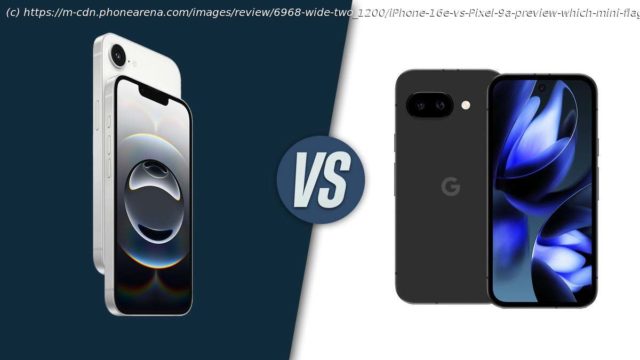The iPhone 16e or the Pixel 9a: which mid-range heavyweight should you choose? We compare the differences.
The iPhone 16e is out, and it’s more powerful than previous SE phones, but it also costs more. It seems to be marking the end of small phones from Apple at least for now. It doesn’t have the mini form factor that many were hoping to see, and its release also resulted in the de-listing of the iPhone SE (2022). In fact, it also took out the iPhone 14, which Apple was still selling as a budget option.
Now, the $600 iPhone 16e is the cheapest one in the iPhone lineup. But it still costs $600.
Here’s the thing, though — we are expecting Google to launch a new Pixel 9a within weeks. And, if it follows its old price structure, it should cost about $500. So, which one of these phones would potentially be the better deal or better bang for buck?
The iPhone 16e is «dressed» in the clothes of an iPhone 14, meaning it has an aluminum frame, flat sides, glass back. The big difference is that the camera on the back is a single ring for the lonely 48 MP main camera. No Dynamic Island on the front, too — it will rock the «classic» iPhone notch above the screen.
Google’s latest Pixel phones also adopted the flat sides, with the Pixel 9 sporting that super-shiny frame. The Pixel 9a gets the same treatment and it’s a metal frame. The back is still plastic, though made matte to kind of resemble frosted glass. Its remodeled camera module on the back is not a full horizontal bar, but a small protruding pill shape, which kind of robs the Pixel from its signature look.
Fans of the classic iPhone mute toggle will not find it on the iPhone 16e, but instead you have the newer Action Button (but no Camera Control button here, though). The Google Pixel 9a is not expected to have any extra buttons apart from the standard power button and volume rocker.
Both phones get the high IP68 rating for added peace of mind. In general, the iPhone will «feel» slightly more premium with the glass back, but the Pixel will feel more fluid and snappy with its 120 Hz screen.
The Pixel 9a’s display is slightly larger, at 6.3 inches versus the iPhone 16e’s 6.1 inches. Both panels are OLED tech, but Google’s Actua display is rated for 2,700 nits peak brightness where the iPhone has 1,200 nits. Both are pretty sharp with the Pixel 9a having 420 pixels per inch, the iPhone — 457 PPI.
But here’s the bad news — the iPhone 16e is stuck with a 60 Hz refresh rate yet again. Yes, Apple insists that’s a premium feature, and that’s the first thing to get axed when you travel south of the Pro. The Pixel 9a, on the other hand, will generously be giving you «premium» 120 Hz every time you swipe and swoop through the interface, but it can go down to 60 Hz when needed or for battery conservation.






